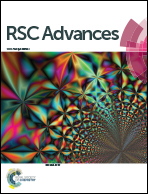Injectable composites based on biosilicate® and alginate: handling and in vitro characterization
Abstract
The objective of the study was to prepare an injectable composite for bone regeneration based on the combination of a highly bioactive glass-ceramic (Biosilicate®) and alginate by optimizing the ratio of Biosilicate®/alginate. These formulations were evaluated in terms of injectability, visco-elastic properties, degradation (i.e. mass loss, pH, calcium deposition) and cytotoxycity. The results showed that by mixing Biosilicate® and alginate, it is possible to obtain an injectable biocomposite material that exhibits interesting elastic properties. Furthermore, the formulations with higher alginate (up to 20 wt%) content showed higher mechanical stability compared to pure Biosilicate®. All formulations mineralized in Simulated Body Fluid (SBF) during the initial 4 days of testing. The cytotoxicity of conditioned media obtained via incubation of the formulations showed negative effects on cell viability but this effect was nullified with increasing the number of washing post-treatments (especially in the case of the formulation containing Biosilicate®/alginate of 42.5/7.5 wt%). Based on the results of the present study, it can be concluded that the material properties of injectable Biosilicate®/alginate formulations seem suitable for bone regenerative applications, for which future studies should aim at biological evaluation in animal experimental models.


 Please wait while we load your content...
Please wait while we load your content...